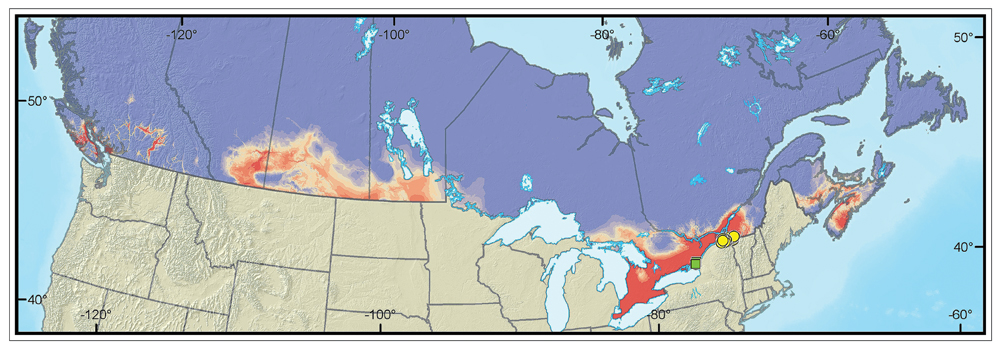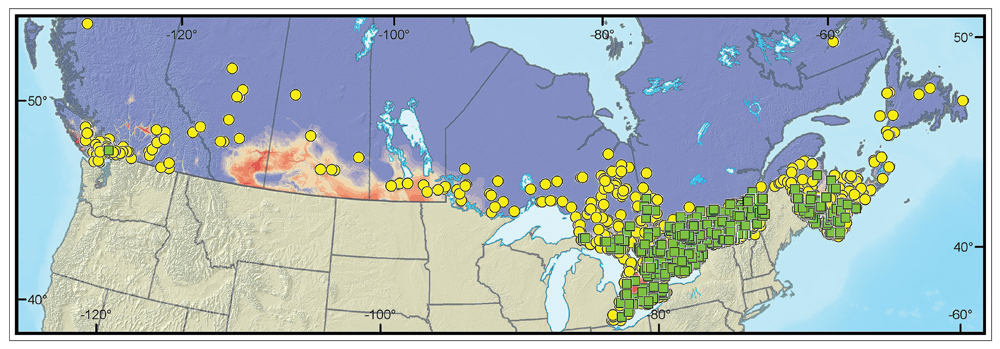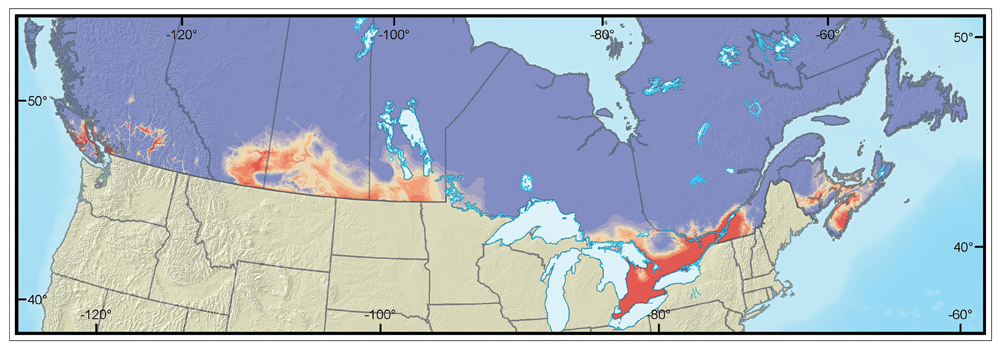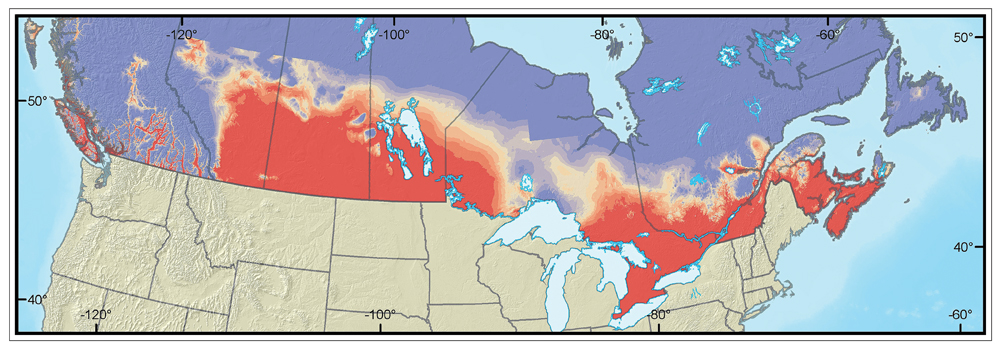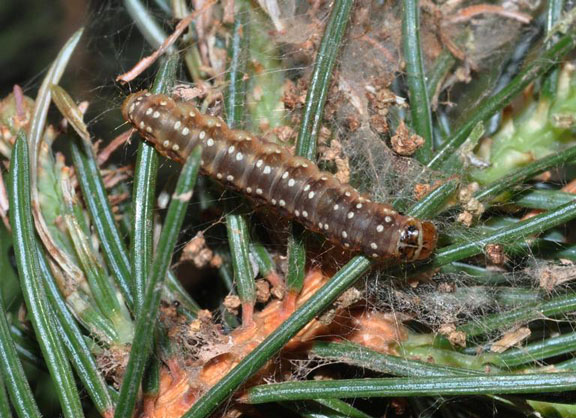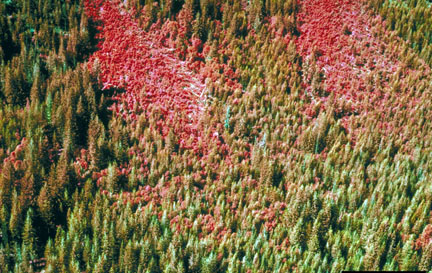Information Forestry, April 2004 — A sliver of road remains—a narrow strip of asphalt running from bridge to barren clearing at river’s edge. Pavement once covered that, too, when it had served as loading area for the island’s dock. To the north and south, thickets of Douglas-fir, Sitka spruce and western redcedar grow. Along the waterfront, terraces built into banks support willows and other species that stabilize the shore and provide shade and shelter to sensitive salmon spawning grounds.
The greenery belies the island’s recent past: for almost 50 years, a sawmill and a cedar-shake mill operated on Baikie Island, in the Campbell River estuary, on the east coast of Vancouver Island. Sloughs separating the island from the foreshore were dredged for log booming and storage. Trucks lumbered on and off the island; tugboats herded log booms from upriver; the island bustled and roared.
The Nature Conservancy of Canada bought the island in 2000, and turned it over to the District of Campbell River to be restored and managed as a nature reserve and park. Sign of industry has been slowly disappearing from the island.
“Some things are coming back on their own,” says District of Campbell River Parks & Recreation Supervisor Susan Simson. “We’re helping other things along. There are places where we’d removed pavement that needed a lot of site preparation. Nothing grows there—not even broom or alder, and they’ll grow just about anywhere.”
This summer, volunteers dug up hard-packed ground once covered by industry, carted away industrial-grade fill, brought in tonnes of soil and compost, and planted the beginnings of a new forest. While local citizens provided most of the labour, part of a $27,000 grant given to the district government by Natural Resources Canada for new forest plantings helps pay for equipment, materials, and hundreds of seedlings still to be planted.
Fast-growing Forest 2020
The funding comes from a $20-million national pilot called Forest 2020 Plantation Demonstration and Assessment, part of the federal government’s $1-billion Climate Change Plan for Canada. Administered by the Canadian Forest Service, Forest 2020 encourages industry, local governments, First Nations, and other landowners to establish plantations of fast-growing trees on unforested land. By late 2007, new plantations of trees producing more than 13.6 centimetres of growth per hectare per year—eight times the national tree-growth average—will be growing on 10,000 hectares across the country. To date, 38 projects under the program are underway or planned in British Columbia.
In most of Canada, fast-growing trees mean hybrid poplars, larch, and Norway and white spruce. On the west coast, with its long growing season, many species—including Douglas-fir, Sitka spruce, cedar, maple, alder—super-produce fibre and quickly store carbon.
This enables west coast program participants such as the District of Campbell River to quickly rehabilitate and convert open areas back to green cover.
“We’re putting back what was originally there,” says Simson, of Baikie Island. “A conifer mix, with some other trees—native maples, willows, maybe some more cottonwoods along the estuary.”
The primary goal of Forest 2020 is long-term carbon sequestration, says Dean Mills (dmills@pfc.cfs.nrcan.gc.ca), who administers the program in British Columbia. Carbon dioxide is a greenhouse gas, and must be accounted for under the Kyoto Protocol for Climate Change, which Canada endorses. Trees take carbon dioxide from the air, and transform the carbon into wood: fast-growing trees do it faster. Carbon eventually stored within Forest 2020 plantations will be tallied in Canada’s accounting of the country’s greenhouse gas emissions, as required under the protocol.
“Forest 2020 allows for a shift in how we view the forest plantations,” says Mills. “Plantations and forests have many functions and can be used for more than just fibre. As long as Forest 2020 plantations sequester carbon at the prescribed rate, they can address other values such as quality of life or wildlife or economic development or other community objectives.”
Although wildlife, fisheries and local citizens benefit directly from the Baikie Island restoration, there are indirect payoffs. Campbell River is slated to become a stop on the cruiseline route to Alaska in 2005: new forests on nearby Baikie Island and other riverside lands will provide an inviting introduction to the town for shipboard visitors. In recognition of that, the district recently passed bylaws limiting development along the estuary to light-industrial or commercial use: existing heavy industry will gradually phase out, leaving the estuary to birds, fish, deer and people using pathways and picnic areas.
“Baikie Island is really a high-profile project within this community,” Simson says. “Support has been amazing. The Campbell River Noon-Hour Rotary Club built trails and pedestrian bridges. The Discovery Coast Greenways Land Trust brings in many volunteers every spring to remove broom and blackberries and other invasive species. The Nature Conservancy is involved, the Department of Fisheries and Oceans, BC Hydro… a lot of people and organizations are making things happen.”
The ultimate waste-recycling loop
Baikie Island is one of two Campbell River projects benefiting from Forest 2020 funding. Further inland, the district government invested the rest of the federal grant in a hybrid-poplar plantation that will eventually provide pulp fibre.
The plantation will not only bring in cash to help pay for itself, it saves the region money. Instead of paying to store and ship biosolids from the region’s 10-year-old waste-treatment plant for re-use elsewhere, engineers use the material to fertilize the plantation, which is located next to the treatment plant.
“This project had great potential because we owned a large piece of land around the plant, which eliminates transportation costs altogether,” says District of Campbell River Engineering Supervisor Ron Neufeld. “It turned out, after we’d done all the necessary field tests of the site, the project was not only a good match financially, but had all the right check marks in terms of soil, groundwater and other environmental conditions.”
The province’s regulations for recycling organic matter Recycling require a number of processes and conditions, including public consultation, site security and site preparation, to be met before a project like this can proceed. At two public meetings hosted by the district to discuss the project, the only concern raised by local residents was the possibility of odour, a problem the district has effectively minimized through appropriate application techniques. Following the public process, the site was fenced and cleared of bushes, and surrounded by a buffer zone and perimeter ditches.
After an initial spring application of biosolids in May, poplar whips were planted at four-metre intervals in rows covering 10 hectares of the site.
The trees received one more application of biosolids fertilizer during the summer months. “The number of applications and the rate of application depends on demand,” Neufeld says. “As the trees grow, demand will increase.”
Plantations are a cost-effective way to deal with Campbell River’s biosolid waste and improve the environment.
“We anticipate that the poplar crop will be ready for market in 10-13 years,” Neufeld says. “Once mature, the trees would likely be used for production of paper – maybe even toilet paper, which would really create an appropriate re-use cycle for this project.”
Caption: Ten hectares surrounding Campbell River’s waste-treatment plant were prepared and planted with hybrid poplars this spring, which will recycle biosolids from the plant into wood fibre.
Caption: Fragments of rare riparian forest communities survived Baikie Island’s industrial past, and are being augmented by Forest 2020 seedlings planted by volunteers.
Sidebar: Under Forest 2020, 10,000 hectares…
of non-forested land will be converted to fast-growing tree plantations by 2007.
of fast-growing trees planted by 2007 could sequester as much as 0.4 Megatonnes of carbon each year by 2012, the end of the Kyoto Protocol’s first commitment period.
IF April 2004. p6-7

